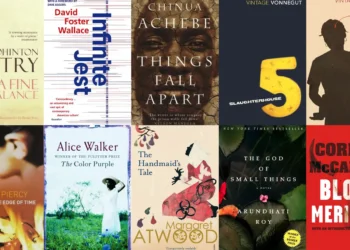Shakuntala by Kalidasa is a timeless masterpiece of Indian literature, encapsulating the essence of love, destiny, and human emotions in its narrative. Written in Sanskrit, this classical play continues to enthrall audiences worldwide with its poignant storytelling and profound themes.
Introduction to “Shakuntala” by Kalidasa
Believed to have been composed by the renowned Sanskrit poet Kalidasa in the 4th or 5th century CE, “Shakuntala” is a seminal work of ancient Indian literature. Set in the backdrop of a mythical era, the play weaves together elements of romance, drama, and spirituality, offering a captivating glimpse into the ethos of ancient Indian society.
Characters in “Shakuntala”
Shakuntala
Shakuntala, the central character of the play, is a beautiful and virtuous maiden raised in the forest by the sage Kanva.
King Dushyanta
King Dushyanta is a valiant monarch who encounters Shakuntala during a hunting expedition in the forest.
Sage Durvasa
Sage Durvasa, known for his short temper and potent curses, inadvertently plays a crucial role in shaping the destiny of Shakuntala.
Other Notable Characters
The play features a host of other characters, including various sages, royal counselors, and celestial beings, each contributing to the rich tapestry of the narrative.
Plot Summary
The story revolves around the fateful encounter between Shakuntala and King Dushyanta in the tranquil environs of the forest. Their blossoming love is thwarted by a series of misunderstandings and curses, leading to separation and heartache. However, destiny ultimately conspires to reunite the estranged lovers, paving the way for a harmonious resolution.
Themes Explored
Love and Destiny
At its core, “Shakuntala” explores the intertwined themes of love and destiny, emphasizing the transcendental nature of human relationships.
Nature versus Civilization
The dichotomy between the idyllic wilderness of the forest and the structured confines of the royal court serves as a backdrop for the narrative, highlighting the tension between nature and civilization.
The Power of Virtue and Forgiveness
The characters in the play grapple with moral dilemmas and ethical choices, underscoring the transformative power of virtue and forgiveness in overcoming adversity.
Cultural Significance
“Shakuntala” holds immense cultural significance in the literary landscape of India, serving as a touchstone for subsequent works of literature and performing arts. Its enduring popularity has inspired numerous adaptations, ranging from theatrical productions to films and television series.
Analysis of Key Scenes
The Ring Incident
One of the pivotal moments in the play occurs when Shakuntala loses the signet ring gifted to her by King Dushyanta, triggering a chain of events that test the depth of their love and fidelity.
Shakuntala’s Departure
The poignant scene depicting Shakuntala’s departure from the hermitage encapsulates the emotional turmoil faced by the protagonist as she grapples with the consequences of her actions.
Dushyanta’s Realization and Penance
King Dushyanta’s realization of his folly and subsequent penance serve as a cathartic moment in the narrative, paving the way for reconciliation and redemption.
The Language and Style of Kalidasa
Kalidasa’s poetic brilliance shines through in “Shakuntala,” with its evocative imagery, lyrical verses, and rich symbolism. The play’s language transcends mere communication, serving as a conduit for profound philosophical insights and aesthetic delight.
Reception and Legacy
“Shakuntala” has garnered widespread acclaim over the centuries, with scholars and critics lauding its thematic depth, narrative complexity, and poetic beauty. Its legacy extends far beyond the realm of literature, influencing diverse artistic expressions and cultural traditions.
Conclusion
In conclusion, “Shakuntala” by Kalidasa remains an enduring testament to the power of love, destiny, and human resilience. Through its timeless narrative and universal themes, the play continues to captivate audiences across generations, reaffirming its status as a literary classic of unparalleled significance.
FAQs about “Shakuntala”
Q: What is the central theme of “Shakuntala”?
A: The central theme of “Shakuntala” revolves around love, destiny, and the transformative power of human relationships.
Q: Who is Sage Durvasa, and what role does he play in the play?
A: Sage Durvasa is a revered sage known for his volatile temperament. His inadvertent curse upon Shakuntala plays a pivotal role in shaping the course of the narrative.
Q: How does Kalidasa portray the character of Shakuntala?
A: Kalidasa portrays Shakuntala as a paragon of beauty, virtue, and resilience, whose journey embodies the triumph of love over adversity.
Q: Are there any adaptations of “Shakuntala” in modern literature or media?
A: Yes, “Shakuntala” has inspired numerous adaptations in various literary forms, including novels, poems, and plays, as well as film and television adaptations.
Q: Why is “Shakuntala” considered a timeless tale?
A: “Shakuntala” is considered a timeless tale due to its universal themes, enduring relevance, and timeless appeal to audiences across cultures and generations.















